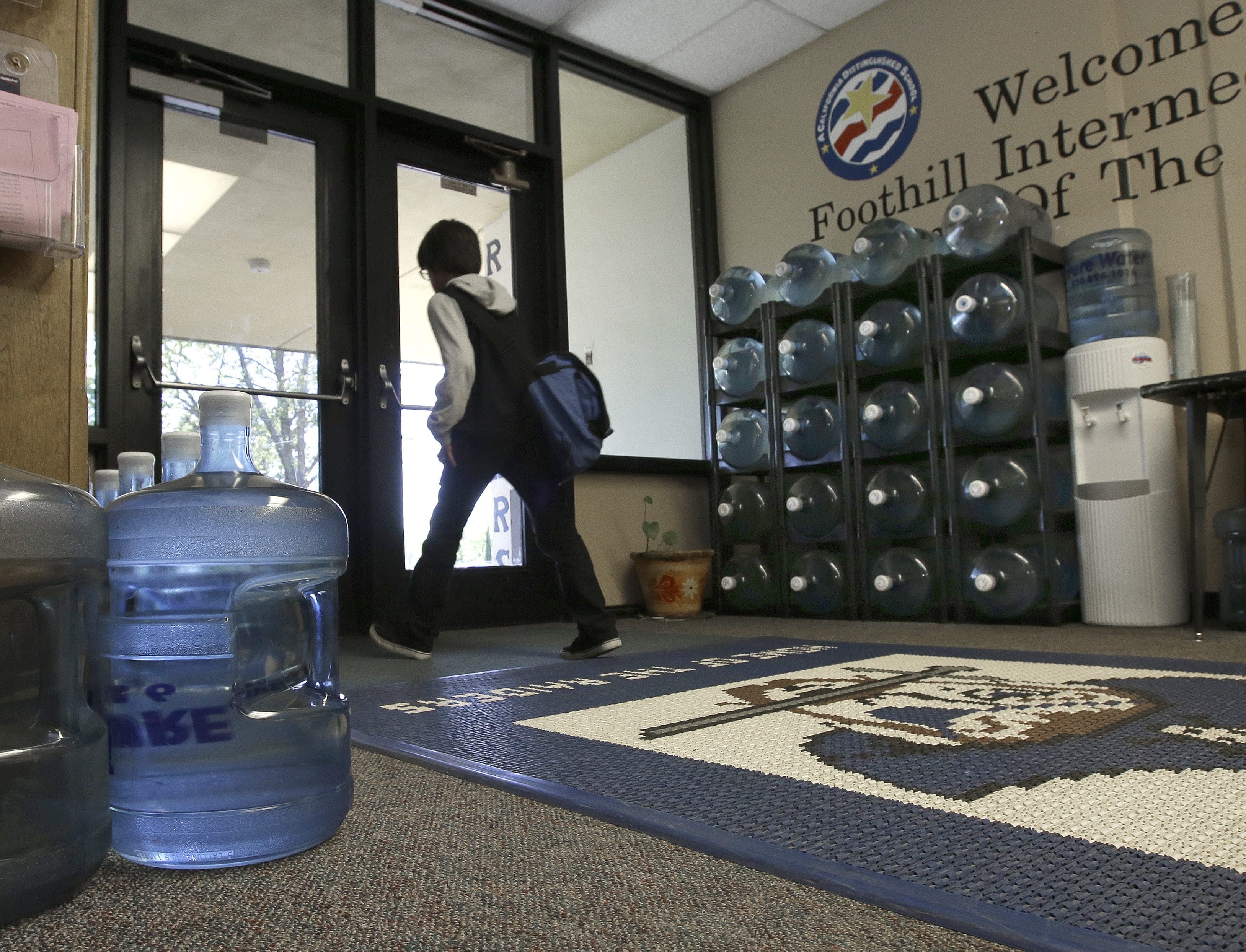Water systems with high lead-level samples
The Associated Press
An Associated Press analysis of Environmental Protection Agency data found that nationwide, nearly 1,400 water systems serving 3.6 million Americans have exceeded the federal lead standard at least once between Jan. 1, 2013, and Sept. 30, 2015. They include 278 systems that are owned and operated by schools and day care centers in 41 states.
Here is a list of Northwest water systems with lead level samples that have exceeded 15 parts per billion, based on data provided by the EPA’s Safe Drinking Water Information System:
Water systems with at least one reading over
15 parts per billion since 2013:
WASHINGTON
Tulalip Bay Water District 1, Tulalip; Washington State Patrol Academy, Port Orchard; Brookhaven, Tacoma; Naval Magazine Indian Island, Silverdale; County Green Estates, Roy; Olympia Forestry Sciences Lab, Olympia; Rainier Christian School, Maple Valley; Spencer Glen, Port Orchard.
OREGON
Periwinkle Mobile Home Park, Eugene; City of Drain; Gresham PWO-Water Section, Gresham; Pleasant Home Water District, Gresham; Lake Grove Water District, Lake Oswego; Hiland WC-Westwood, Newberg; Clackamas River Water-Clairmont, Clackamas; Pacific City Joint Water-Sanitary Authority; Tierra Del Mar Water Co., Cloverdale; Burlington Water District, St. Helens; Palatine Hill Water District, Portland; Portland Water Bureau, Portland; West Slope Water District, Portland; Valley View Water District, Beaverton; Lorna Portland Water LLC, Portland; Tualatin Valley Water District, Beaverton; Raleigh Water District, Portland; Rockwood PUD, Portland; Skyview Acres Water Co-op; Sandy; City of Tigard, Tigard; Timber Water Association; Timber; City of Tualatin, Tualatin; Watseco-Barview Water District, Rockaway Beach; Row River Valley Water District, Dorena; Cold Springs Water Co., Gaston; Molalla River School District, Rural Dell Elementary School, Molalla; Kidco Head Start-Sunnyside, Lebanon; Eddyville Charter School, Eddyville; Salmon River RV Park, Otis; Corvallis Waldorf Association, Corvallis; Willowcreek Elementary School, Vale; Valley Inquiry Charter School, Salem; West Linn/Wilsonville School District, Tualatin; Lebanon Union High-Land Lab, Lebanon; Wayne Buck Water System, Corvallis; Emerald Christian Academy, Pleasant Hill; Scappoose Adventist School, Scappoose.
IDAHO
Evergreen Terrace Water Association, St. Maries; Kootenai County Water District 1, Coeur d’Alene; Arundel by the River Mobile Home, Coeur d’Alene; Dworshak Power House View Point, Ahsahka; City of Kamiah, Kamiah; Emmett Heat Start, Payette; Partners Produce, Payette; Greenstar Building Systems, Weiser; Flying H Trailer Ranch Inc., Boise; Castle Mountain Creeks Owners Association, Boise; Mountain Shadows LLC, Garden Valley; River at Pine Tree, Garden Valley; Tamarack Resort Association Inc., Donnelly; YMCA Horsethief Camp, Boise; Alzar School Inc., Cascade; Glanbia Foods Inc., Gooding; Simplot Research Center, Pocatello; Jefferson Alternative School, Rigby; IBEX Incorporated, Rigby; Meadowlark Trailer Court, Ammon; True Care Assisted Living LLC, Eagle; Dugway-Carr Facility, Montpelier.



